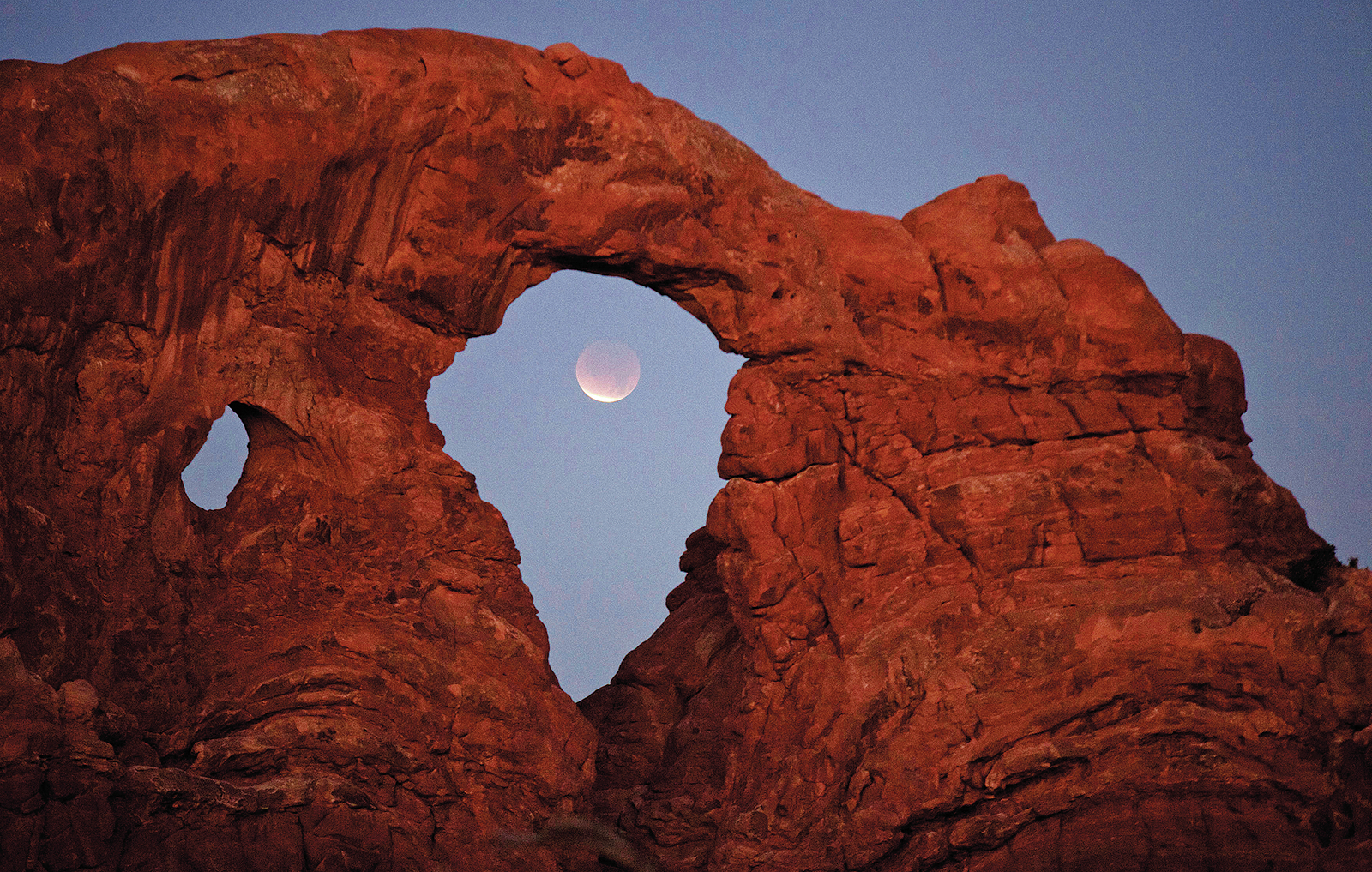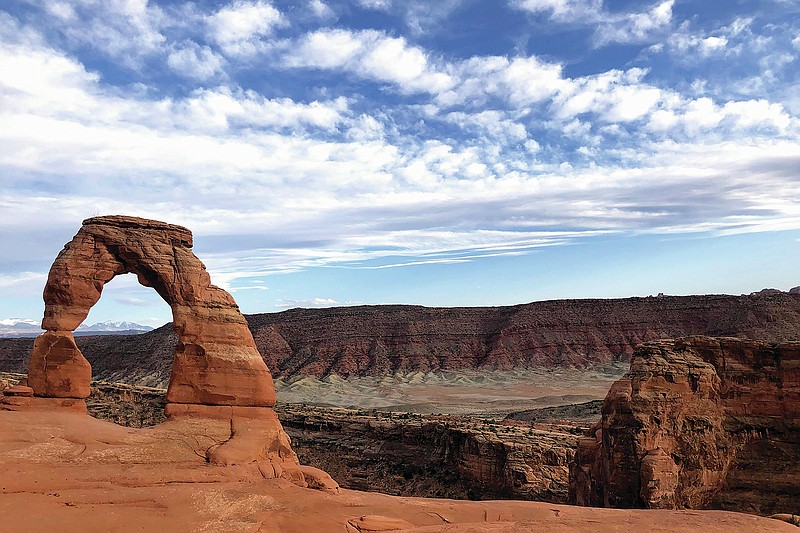ST. GEORGE, Utah -- As the world nears its third year of the covid-19 pandemic, there is at least one industry that is bouncing back -- Utah travel and tourism.
It's one of the most profitable industries in the state, contributing $7.07 billion to the economy and supporting thousands of jobs last year, according to a report released recently by the Kem C. Gardener Policy Institute at the University of Utah.
Compared to the rest of the U.S., Utah saw more visitor spending and more in-person trips as people ventured away from cities and toward outdoor destinations like the state's five national parks, the Spectrum newspaper reported.
"Overall, Utah travel and tourism fared better than the industry in neighboring states and the U.S. as a whole," the report said.
Before the pandemic, Utah's thriving travel and tourism industry was already breaking records in visitation and funds and was poised to continue that trajectory, official data shows.
Despite the travel and tourism industry being the hardest-hit industry by the pandemic in 2020, the report said the industry experienced a "healthy recovery" during the first half of this year, particularly in rural areas.
"Domestic visitors traded their plane trips for road trips, hotel reservations for short-term rentals, and their urban-centered plans for rural adventures," the report said.
This year, while the covid-19 Delta variant and now Omicron variant did continue to perpetuate a lag in visitation, travel is still anticipated to have increased, experts say.
"Of course, increased 2021 travel has depended largely on the production, distribution, administration, and effectiveness of COVID-19 vaccines and the status of government-enacted travel restrictions," the report said.
Utah national park gateway communities lost more than 5,000 jobs last year and hundreds of millions in economic funds, officials said.
"Utah national park visitors spent the largest shares on lodging, restaurants, and gasoline," the report said.
And while most of Utah's national parks smashed some monthly visitor records last year, especially in the fall, overall the parks lost nearly 3 million visitors, with Bryce Canyon National Park losing nearly 44% of its usual visitation -- the most of any Utah park, according to the report.
The numbers seem to be plateauing near 2019 levels, though, it said.
"Based on recent NPS visitation data, record visitation continued at Utah's five national parks during the first half of 2021, and then dropped below 2019 baseline visitation in July 2021," the report said.
While 10 of Utah's national places lost visitation, Cedar Breaks National Monument saw nearly a 50% increase in visitors with over a quarter of a million new visitors last year, according to the report.
Of the people who did travel to Utah during 2020, Californians, Nevadans, Idahoans, Coloradans, Arizonans and Texans were the biggest groups of visitors, the report said.
State parks and ski resorts were the unexpected heroes in the industry as they were flooded with visitors, breaking records, according to the report. And recreation-related sales skyrocketed in 2020 compared to the year before, with recreational and vacation camp sales up over 80%.
Because of the pandemic, visitors spent nearly 30% less than 2019's record spending of $10.13 billion, the report said. The ripple effect of this meant nearly 120,00 fewer tourism jobs and over $250 million lost tax revenue across the state.
"The top three tourism-related sectors that suffered the greatest job losses in 2020 were the accommodations sector (–4,536 jobs), the arts, entertainment, and recreation sector (–2,671 jobs), and the performing arts sector (–1,808 jobs)," the report said.
However, Canyon Country, or the southeastern Utah region where four of the five national parks sit, maintains the largest share of leisure and hospitality jobs in the state, the report said.
Southwest Utah is the third most profitable area for leisure and hospitality taxable sales in the state, the report showed, with more than $730 million taxable sales in total. Washington County is the fourth most profitable county in the state with nearly $600 million in taxable sales.
The only industry to make it out of 2020 relatively unscathed was the RV Parks and Camps industry with a nearly 12% increase in leisure and hospitality taxable sales, where all other tourism industries lost millions of dollars, according to the report.
Statewide occupancy rates in accommodations dropped by over a quarter, impacting the transient room tax that tourism offices, local governments and many others depend on, the report showed. Washington County raked in the third-most transient room tax, or tax collected on hotels and accommodations to support governmental tourism matters, even though occupancy rates were down.
Short-term bookings also increased last year, the report said, plus "a surge in digital wanderers and amenity migrants, which supported the growth of "Zoom Towns," or a growing community filled with newly-remote workers. These rentals, like Airbnb and VRBO, increased by 45% in Washington County in 2020, though they were only about 4% of all total housing.
But in Kane County, where part of Zion National Park resides, over 13% of housing units were short-term rentals -- the third highest in the state, according to the report. Grand County, home to Arches and Canyonlands National Parks, has the second-highest share of short-term rentals at nearly 19%.
Going forward, the Gardner Institute identifies climate change, seasonal housing shortage, hospitality labor shortage and equity, diversity and inclusion as the issues Utah's travel and tourism industry will face.
"A recent scientific study reported double the rate of warming in U.S. national parks compared with all of the U.S.," the report said.
Otherwise, housing for travel and tourism workers is key to securing the future of Utah's recreation industry, officials said.
"When a property owner can make a typical month's rent in a matter of days by renting to tourists, there is little incentive to rent longer-term to the leisure and hospitality workforce," the report said. "Unfortunately, if seasonal workers cannot secure housing, hospitality businesses could face severe understaffing and eventual closure."
The Gardner Institute said the focus should be on obtaining employee housing, even if that means fewer short-term rentals.
"The conversion of long-term employee rentals into short-term visitor rentals has intensified the employee housing crisis," the report said. "Meeting the ever-changing job demand requires a combination of local and nonlocal workers; and these employees need housing."
 FILE - This Sept. 15, 2015, file photo, shows Zion National Park near Springdale, Utah. Zion National Park will soon require reservations to hike the famous southern Utah trail, known as Angel's Landing. perched on the edge of a red-rock cliff, officials said Friday , Dec. 3, 2021. (AP Photo/Rick Bowmer, File)
FILE - This Sept. 15, 2015, file photo, shows Zion National Park near Springdale, Utah. Zion National Park will soon require reservations to hike the famous southern Utah trail, known as Angel's Landing. perched on the edge of a red-rock cliff, officials said Friday , Dec. 3, 2021. (AP Photo/Rick Bowmer, File) FILE - In this Dec. 10, 2011, file photo, a lunar eclipse is framed within Turret Arch at Arches National Park near Moab, Utah. The family of a women's rights activist from Uganda sued the National Park Service this month after she was decapitated last year by a gate at Utah's Arches National Park. The gate had been left unlatched against federal policy for two weeks before it struck Esther Nakajjigo in June 2020, according to the lawsuit filed in Denver. (AP Photo/Julie Jacobson, File)
FILE - In this Dec. 10, 2011, file photo, a lunar eclipse is framed within Turret Arch at Arches National Park near Moab, Utah. The family of a women's rights activist from Uganda sued the National Park Service this month after she was decapitated last year by a gate at Utah's Arches National Park. The gate had been left unlatched against federal policy for two weeks before it struck Esther Nakajjigo in June 2020, according to the lawsuit filed in Denver. (AP Photo/Julie Jacobson, File)
